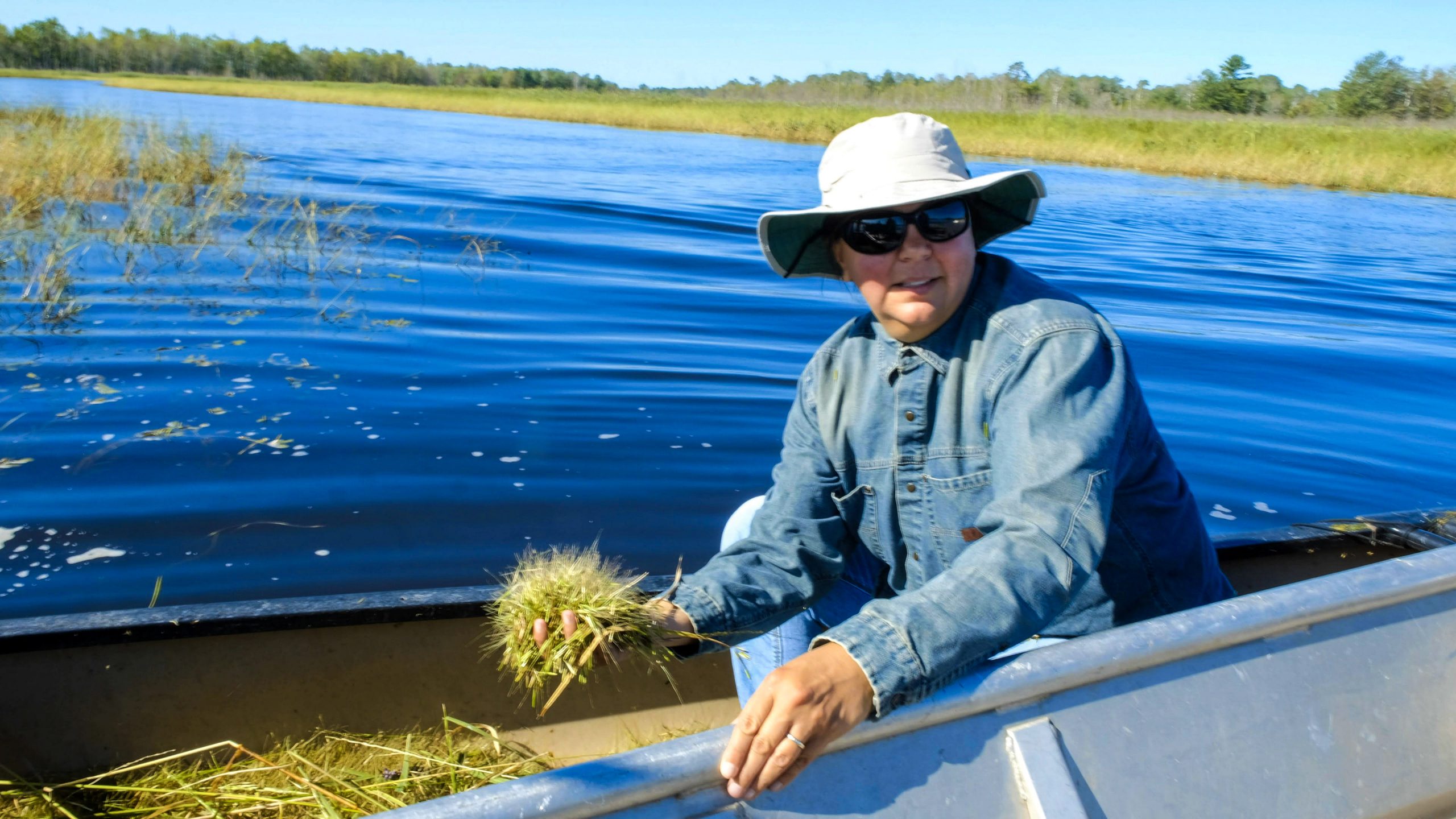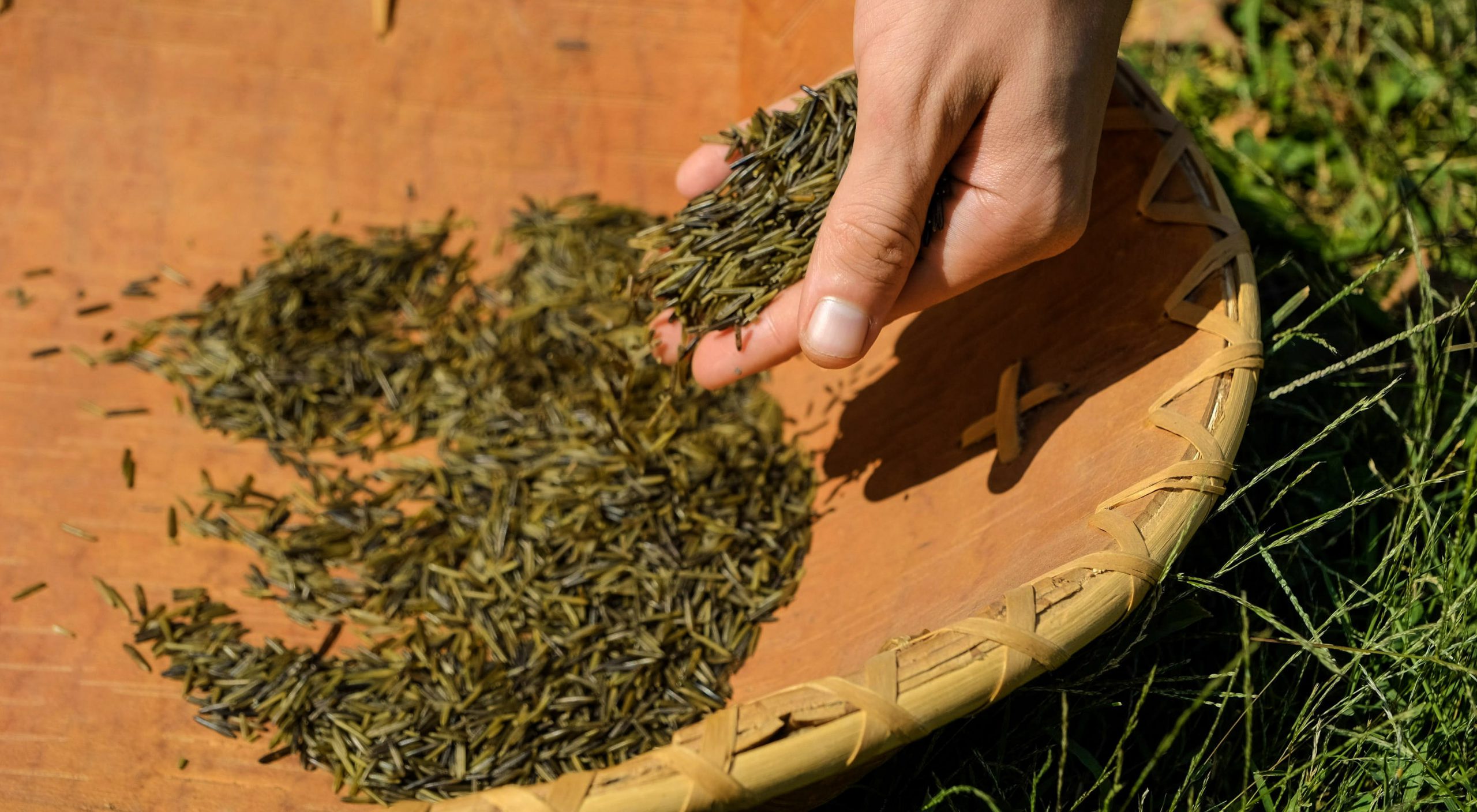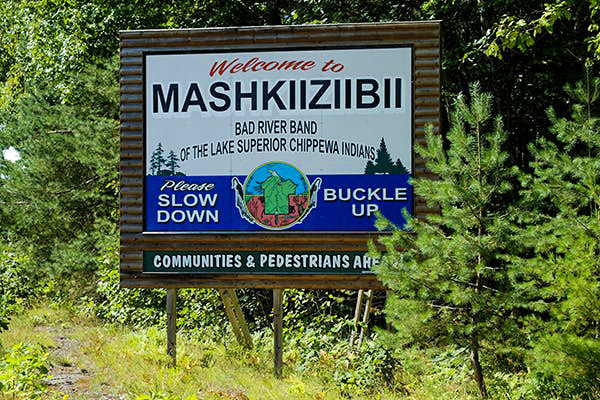Indianz.Com > News > Indian Country Today: Ojibwe people carry on wild rice tradition amid COVID-19
‘Manoomin will carry you through’
The healing power of the annual wild rice harvest transcends the pandemic
Wednesday, September 30, 2020
Indian Country Today
Every fall, Ojibwe go down to the river and lake sloughs surrounding the Great Lakes region to manoominike, or make wild rice, in two-person teams in canoes.
One person stands in the rear of the canoe, propelling it forward through the rice beds with a long pole, while the other person sits in the front, bending the rice stalks with two wooden sticks and knocking the grains into the bottom of the canoe. Some of the grains fall back into the water during the process, thus allowing the manoomin, or wild rice, to reseed itself.
The annual manoomin harvest goes from late August until mid to late September as it has for time immemorial. This year is no different, even with the coronavirus altering nearly every aspect of human life.
Since harvesting manoomin is by nature a safe, social-distanced activity, it is providing a much-needed sense of normalcy during the COVID-19 pandemic.
“Manoominike is the perfect antidote for us now, especially after being worried and cooped up inside for so long,” says Philomena Kebec of the Bad River Band of Lake Superior Chippewa in Wisconsin.



2020 Bad River Powwow has been cancelled.
Posted by Bad River Band of Lake Superior Chippewa on Thursday, June 4, 2020
Mary Annette Pember, citizen of the Red Cliff Ojibwe tribe, is national correspondent for Indian Country Today. Follow Pember on Twitter @mapember. Based in Cincinnati, Ohio. Pember loves film, books and jingle dress dancing.
“Our stories are worth telling. Our stories are worth sharing. Our stories are worth your support”: This article originally appeared on Indian Country Today LLC, a nonprofit, public media enterprise. Reader support is critical. ICT does not charge for subscriptions and tribal media (or any media, for that matter) can use the publiciation’s content for free. Contribute to the nonprofit Indian Country Today.
Search
Filed Under
Tags
More Headlines
Cronkite News: Gathering addresses ‘epidemic’ among Native people
VIDEO: Cody Desautel on tribes and federal forest management
AUDIO: Legislative Hearing on Discussion Draft of Forest Management Bill
Native America Calling: Remembering the 1974 Navajo border town murders
Native America Calling: Can the right approach close the Native immunization gap?
Cronkite News: Long COVID cases remain high in Arizona
Native America Calling: Eyes in the sky for development, public safety, and recreation
Native America Calling: Three new films offer diverse views of Native life
NAFOA: 5 Things You Need to Know this Week
Chuck Hoskin: Cherokee Nation works toward cure for arthritis
Native America Calling: Protecting young people from the down sides of social media
Cronkite News: Fake ‘shaman’ among candidates failing to make Congressional ballot
Native America Calling: New Native voices in poetry
Cronkite News: Tribes air concerns about border at hearing in nation’s capital
Native America Calling: Indiginerds descend on Oklahoma City
More Headlines
VIDEO: Cody Desautel on tribes and federal forest management
AUDIO: Legislative Hearing on Discussion Draft of Forest Management Bill
Native America Calling: Remembering the 1974 Navajo border town murders
Native America Calling: Can the right approach close the Native immunization gap?
Cronkite News: Long COVID cases remain high in Arizona
Native America Calling: Eyes in the sky for development, public safety, and recreation
Native America Calling: Three new films offer diverse views of Native life
NAFOA: 5 Things You Need to Know this Week
Chuck Hoskin: Cherokee Nation works toward cure for arthritis
Native America Calling: Protecting young people from the down sides of social media
Cronkite News: Fake ‘shaman’ among candidates failing to make Congressional ballot
Native America Calling: New Native voices in poetry
Cronkite News: Tribes air concerns about border at hearing in nation’s capital
Native America Calling: Indiginerds descend on Oklahoma City
More Headlines